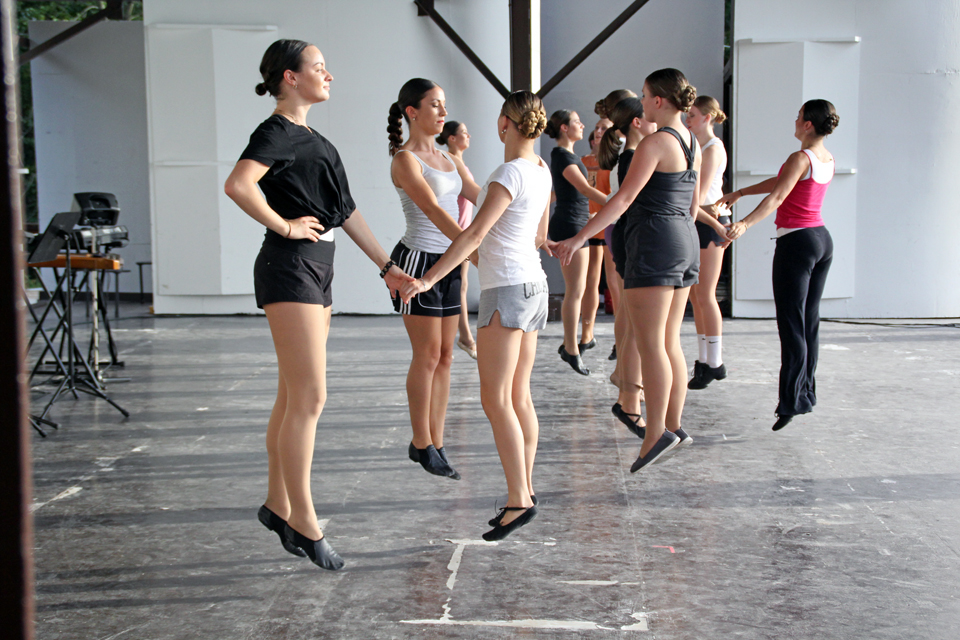
By: Claire Murray | Photo Editor
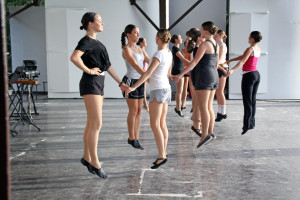
Balancing a full college schedule and traveling the country with a nationally renowned Eastern European performance group is no simple feat.
Under the direction of Paul Stafura, the Duquesne University Tamburitzans embark on their 78th season, performing traditional dance and music native to a variety of nations, including Croatia, Armenia, Serbia, Macedonia, Slovakia, Russia, Ukraine Hungary, and Czech Republic.
The 28 Tammie members spend their days in class, their summers in rehearsal and their weekends singing, dancing and making music. Duquesne students watch the group perform during freshman orientation, or maybe they drive past the Tamburitzan rehearsal space on the Boulevard of the Allies, but what really is going on between the shows or behind the scenes of the Duquesne University Tamburitzans?
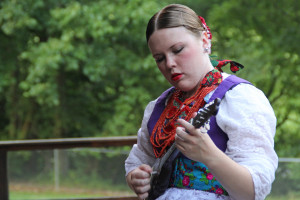
Rehearsal
For the Tamburitzans, summer ends in July when the group travels to Washington & Jefferson College in Washington, Pennsylv., to learn the music and choreography for their entire upcoming season. Instructors travel from different countries and different states to work with the group. Consequently, visitors are prohibited in order to limit distractions.
According to senior Nick Dorfner, the 25 days of rehearsal span from 8 a.m. to 10 p.m. Monday through Friday, with shorter rehearsals on the weekends. The group gets several 10 minute breaks and three long breaks for meals.
“Many performers stay even after 10 p.m. to continue practicing challenging dance steps or attempting to memorize music. Musicians and dancers have the same time commitment,” Dorfner explained.
Junior Krista Gush grew up playing the tambura, a Croatian instrument, and auditioned for the Tamburitzans specifically for the tambura spot in the ensemble.
“I go to sleep thinking about this. I go to sleep thinking ‘tomorrow I need to wake up at 7 a.m. to go to the Tamburitzan building and practice before class starts.’ Our audiences are usually pretty big. You can’t go out there and not know what you’re doing,” Gush said.
During the school year, the Tammies rehearse 5:15 to 10 p.m. Friday night, and typically spend weekends traveling to shows.

On the bus
The coach tour bus with “The Duquesne University Tamburitzans” plastered on every side serves as an iconic mode of transportation to for the well-travelled group, hauling the members, their costumes and their instruments around the country.
The Tammies travel as far as Minnesota, Wisconsin and Florida, custom features have been added to the bus for the long trips on which the group members must make the bus their home. Each person gets their own seat and a seat partner. Everyone has a pouch filled with personal belongings slung over the seat in front of them. Custom mats can be placed in between the seat isles transforming the seats into beds. Two Tammies will sleep sprawled out across the seats while two more will sleep below them on the floor.
“It’s funny to see everyone waking up and crawling up from the floor,” junior Allegra Haritan said.
As part of a Tamburitzan ritual, the group celebrates each time the bus enters Pittsburgh.
“When we go through the Fort Pitt tunnels, we hit the top of the bus like, ‘Yay we’re home finally after being on the bus for 24 hours,’” senior Katy Moore said.
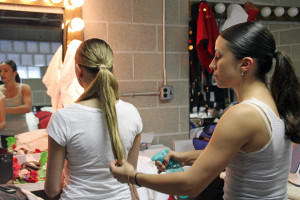
Backstage
“So many of us have different lengths of hair and different colors of hair. We aren’t allowed to have highlights or low lights. They don’t want anybody to stand out,” explained freshman Anastasiya Kaspruk as Katy Nemeth helped her braid a long, brown weave into her hair.
To achieve a homogenous look, the girls are required to braid long fake hair into their existing hair so that their braids all fall at the same length.
“I got this at a wig store. It was $3. Some people actually spend a lot of money on their braids, but I go through them so much that it isn’t worth it to spend the money,” Nemeth said.
The hairstyle is just one step of costume preparation for a Tammie show. Each dance requires an extensive wardrobe change. As a result, the dancers carefully organize their costume pieces so they can quickly change in less than three minutes.
“The most layered costume is Hungarian which includes a blouse, padded roll, and 5 slips of varying length and size. On top of that is a skirt, an apron, as well as a shawl, headpiece, necklace and earrings,” said Ira Goudimiak.
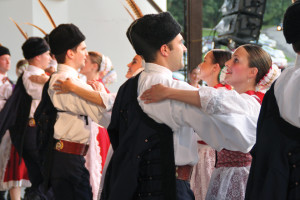
Why would you become a Tamburitzan?
The group members come from a variety of backgrounds. Every performer has a different story regarding how they developed their passion for Eastern European performance.
“I’ve done Serbian dancing my entire life. The group came to Lowell, Mass. which is where I saw them and I thought this was really cool,” freshman Boba Vlajkovic said.
Conversely, freshman Kaeli Stolar said, “I’ve never done anything like this in my life. Before I came here, I was only tap dancing.”
Miloš Damnjanović is one of the group’s three international students. He came across a poster for the Tamburitzans while performing in Monroeville at the Serbian Orthodox Church, and later he applied for the program.
“My family is in Serbia, but good people are here. I see them like my new family…well, some of them,” joked Damnjanović.
Nemeth also said the group has a close bond.
“We say ‘Once a Tammie, you’re always a Tammie,’” Nemeth said. “We’re together all of the time. We sleep, eat, do everything together. We get to know so much about each other. We’re very open with each other. There’s always someone you can call if you ever need anything.”
The group’s next performance in Pittsburgh will be during Heritage Mass at 11 a.m. Sept. 21 in the Duquesne University Chapel. This performance is open to the public.




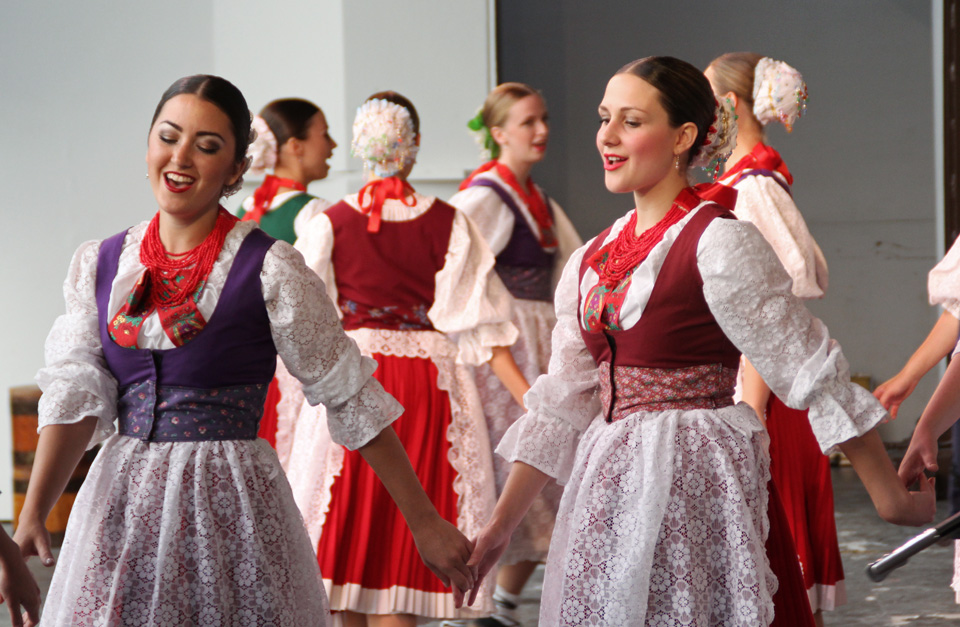
Awesome shots. Especially the first one!
The first dance of the show, the one pictures above, is actually from the Croatian region of Turopolje. It is not Hungarian.